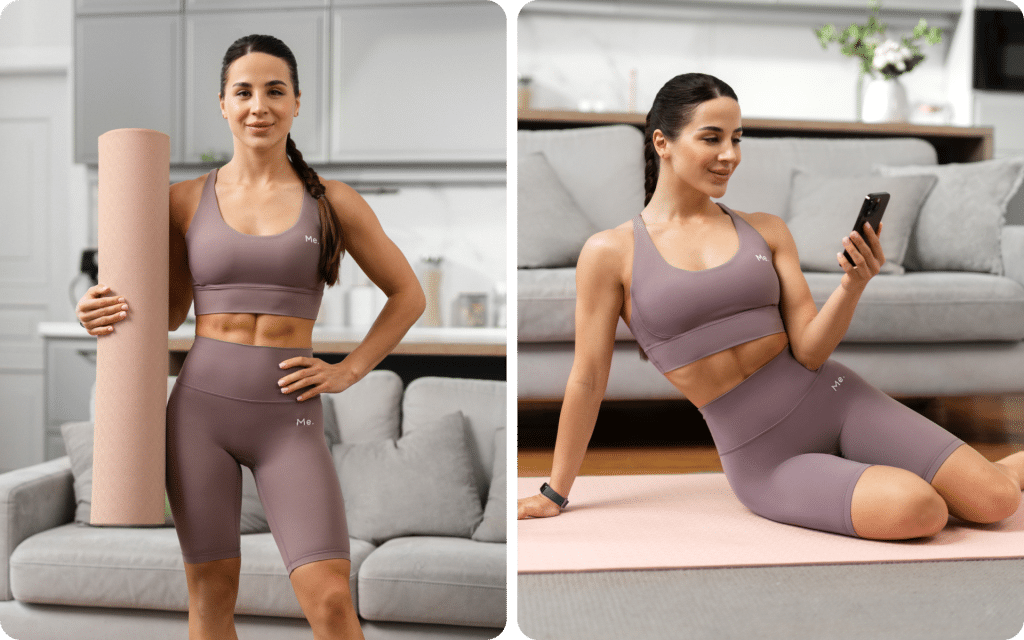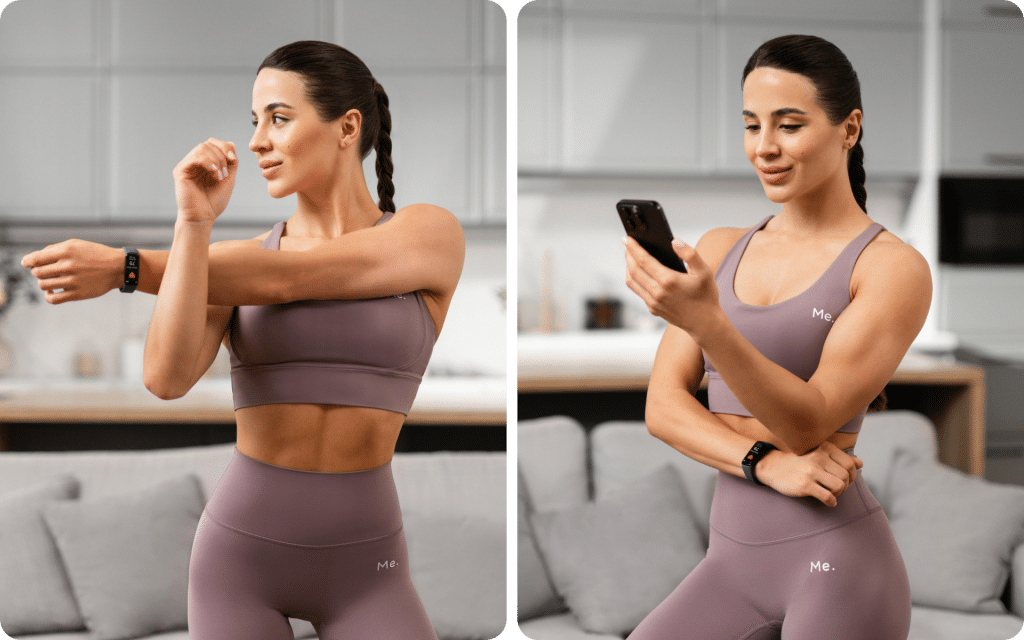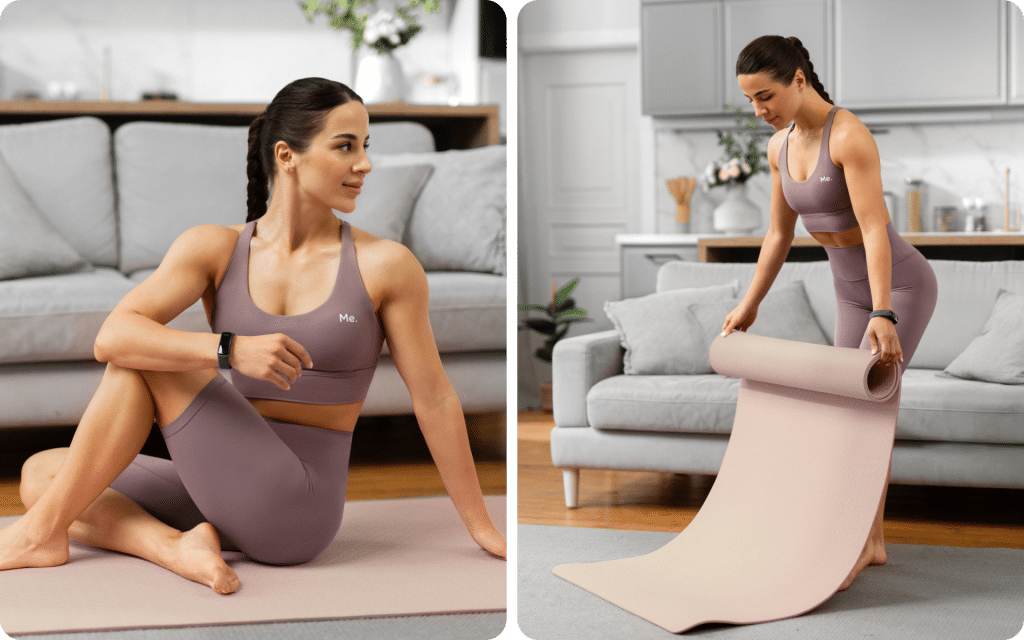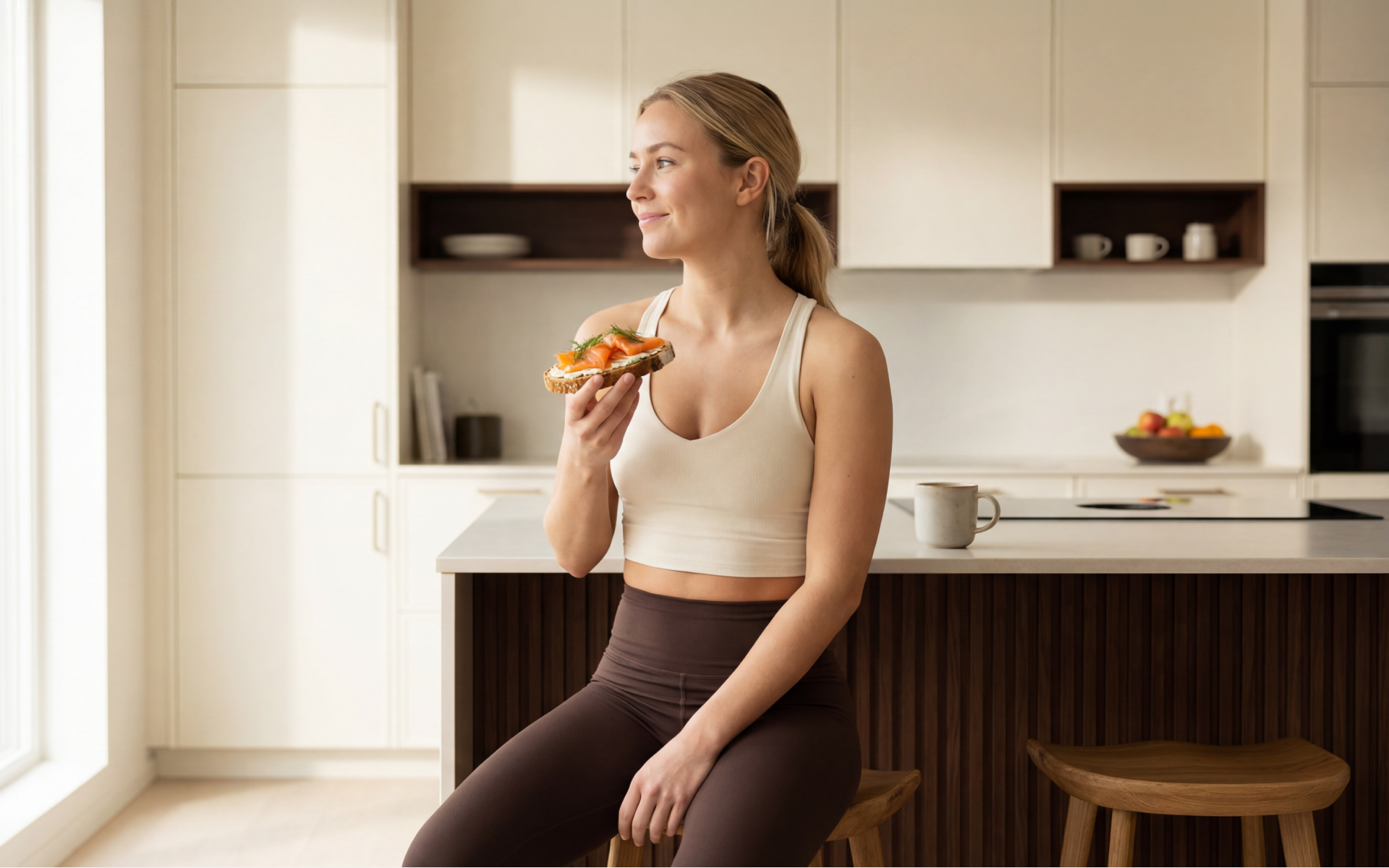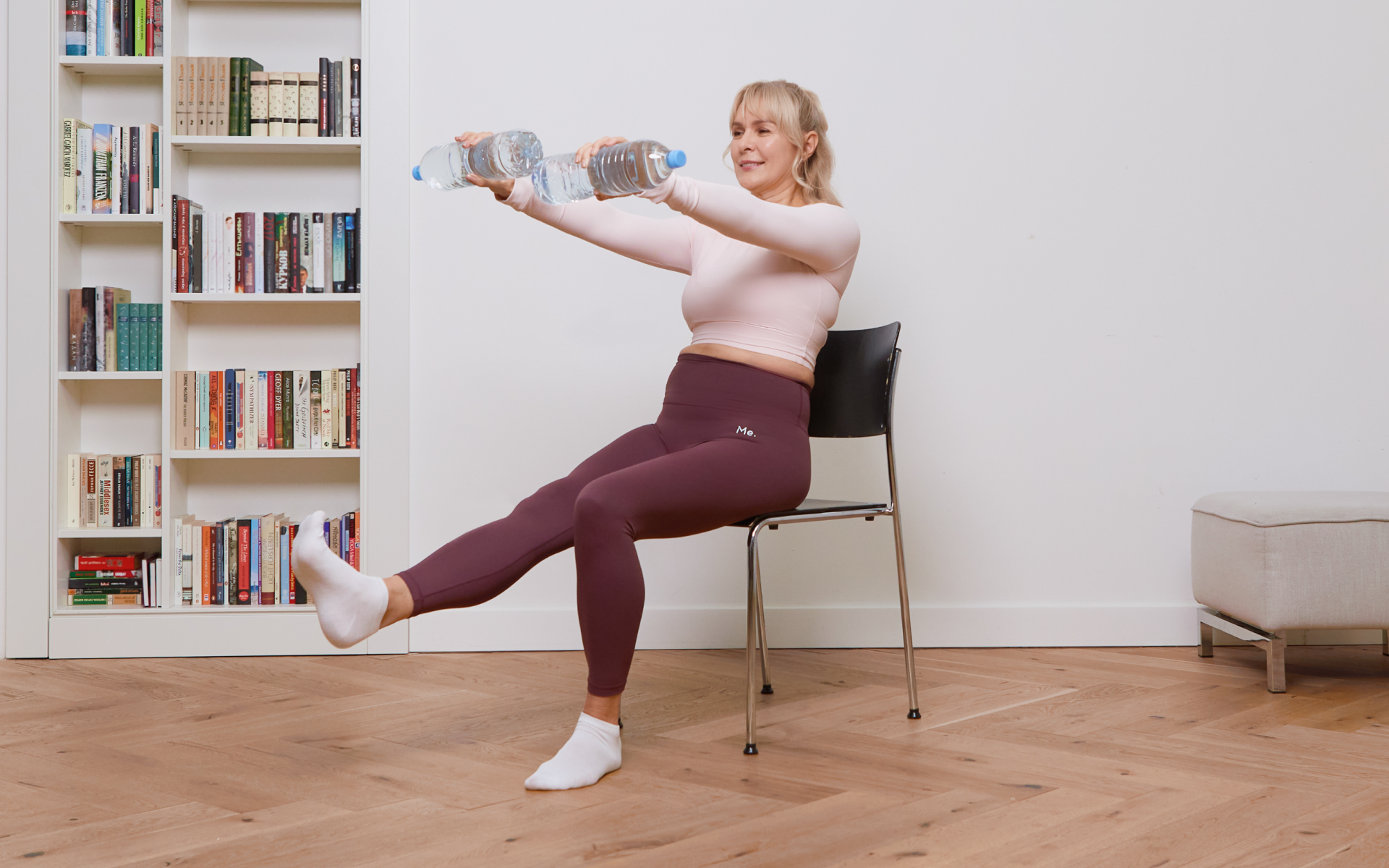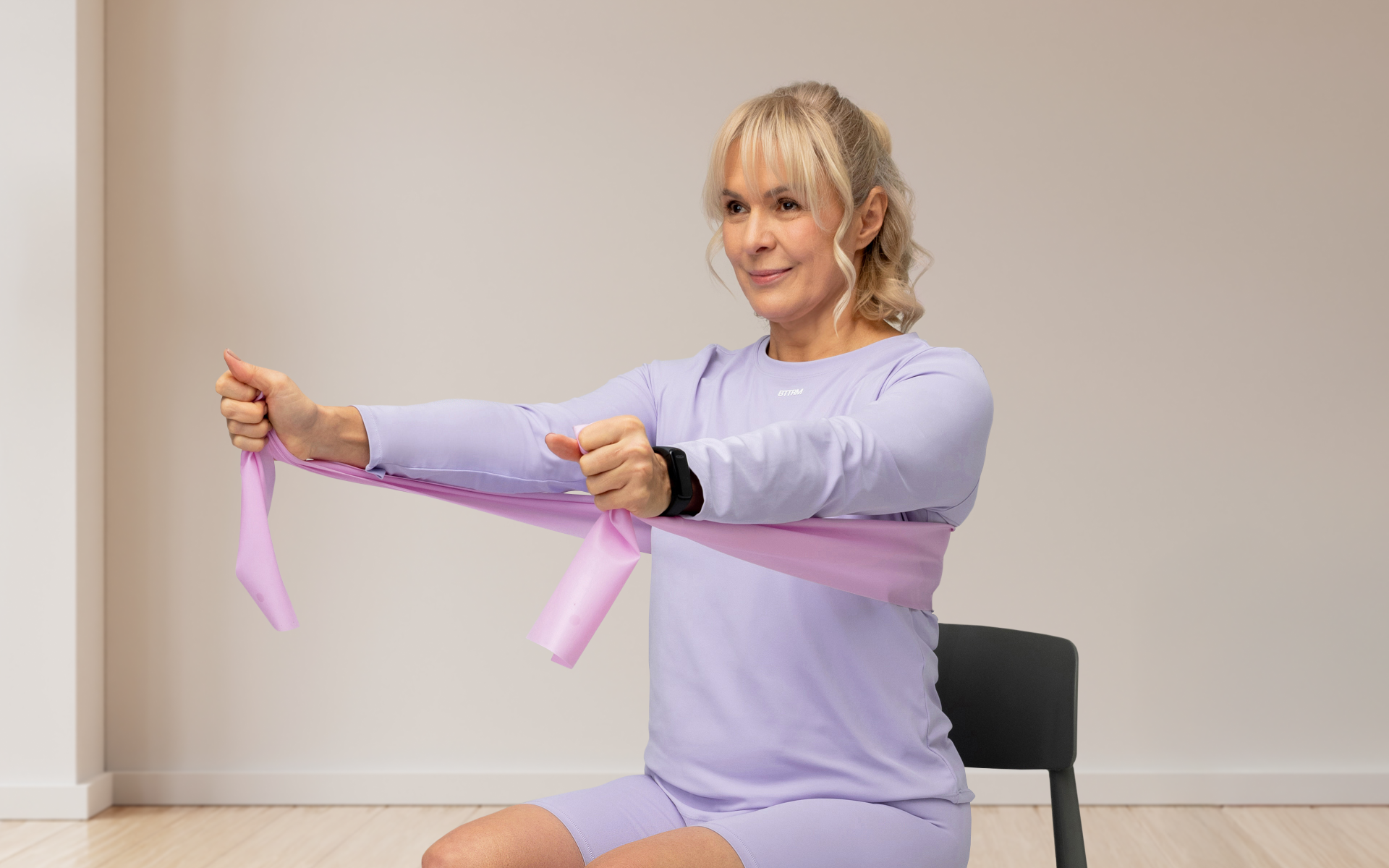Maintaining a healthy weight is good for you because it does the following:
- Lowers your risk of diseases
- Increases your energy levels
- It helps you feel more confident in your skin.
- Exercise also has numerous mental health benefits, such as reducing stress and anxiety.
However, while weight loss may be a common fitness goal for many women, it shouldn’t be the only one. Focusing solely on the number on the scale can lead to unhealthy habits and an unhealthy relationship with food and exercise.
This article covers 6 alternative fitness goals for women wanting to do more than lose weight.
What Are Some Healthy Fitness Goals For Women?
Regarding fitness, a well-rounded approach can help you achieve much more than just weight management.
So, what can be a fitness goal for a woman?
Actual fitness goals should enhance:
- Mental well-being
- Your physical health
- The overall quality of life
Here are 6 fitness goals examples for beginners and any woman looking to improve her health and wellness:
1. Build Strength And Muscle
Strength training isn’t just about lifting heavier weights.
Its purpose is to help you:
- Increase bone density
- Build lean muscle mass.
- Help you stay functional in everyday life.
Strength makes life easier, whether carrying groceries, playing with your kids, or gardening (1).
Strength training should be part of fitness goals for women over 40 to maintain their independence and toned appearance.
Adding resistance exercises like:
- Bodyweight movements
- Resistance bands
- Dumbbells
To your routine, 2-3 times a week will improve your overall strength.
Plus, muscle burns more calories at rest, which supports metabolic health year-round (2).
Whether you’re a workout beast or just a beginner making your first foray into the world of fitness and dieting – BetterMe has a lot to offer to both newbies and experts! Install the app and experience the versatility first-hand!
2. Improve Cardiovascular Endurance
A strong heart and lungs are essential to overall health.
Cardiovascular fitness:
- Boosts energy
- Improves circulation
- Supports mental health (3)
You don’t have to run marathons to achieve this goal!
Incorporate weekly activities such as:
- A fun dance class
- Brisk walking
- Swimming
- Cycling
Gradually work toward doing 150 minutes of moderate aerobic or 75 minutes of vigorous activity each week, based on your fitness level (4).
3. Enhance Flexibility And Mobility
Flexibility and mobility will:
- Make your joints healthy
- Reduce the risk of injury
- Allow you to maintain your range of motion as you age (5)
Stretching exercises, yoga, or Pilates are perfect for this goal.
Targeting key muscle groups like your hips, hamstrings, and shoulders in short, daily sessions of 5–10 minutes can make a big difference.
The goal here is maintaining ease during functional movements, such as:
- Lifting
- Bending
- Twisting
4. Prioritize Mental Health Through Movement
Fitness isn’t only about the body but also the mind.
Exercise will:
- Reduce stress
- Release feel-good endorphins
- Alleviate symptoms of anxiety and depression (6).
Create a habit around forms of movement that feel enjoyable and uplifting.
- Walk in nature
- Take a group fitness class.
- Practice deep-breathing workouts
The aim is to use exercise for mental clarity and emotional resilience.
5. Focus On Sleep-Friendly Fitness
Believe it or not, fitness and sleep are deeply connected. Regular physical activity helps regulate your circadian rhythm and improves sleep quality (7).
If you’re having trouble sleeping, prioritize low-impact, relaxing exercises like restorative yoga or gentle stretching in the evening.
Avoid high-intensity workouts before bed because they can ramp up your energy when it’s time to rest. Instead, aim for 7–9 hours of sleep per night to allow your body to recover and recharge.
6. Cultivate Consistency Over Perfection
Instead of chasing fast results or trying to do it all perfectly, aim to establish a consistent fitness routine that works with your lifestyle. Consistency will yield better long-term results than ambitious, short-lived efforts.
Small habits add up over time, such as:
- A 10-minute workout
- A quick yoga session
- A brisk walk
The goal is to build a healthy relationship with fitness that lasts for years and keeps you showing up without burnout.
Read more: 5-Minute Pilates Abs: Get a Flat Stomach and Strengthen Your Core (Super Intense)
How To Figure Out Your Fitness Goals?
Setting fitness goals is a personal process that helps you stay focused and motivated.
However, these goals must align with your identity, values, and lifestyle.
Here’s a guide to help you identify meaningful goals and set yourself up for success:
1. Start With Self-Assessment
Take a step back and evaluate where you currently stand.
- Ask yourself: What’s working in my fitness routine right now? What’s not?
- Consider your physical health, such as weight, energy levels, strength, or endurance.
- Think about your mental and emotional health, like how you feel after exercising or how it helps with stress.
This honest reflection gives you a baseline from which to build.
2. Identify Your Why
Dig into the deeper reasons behind wanting to improve your fitness.
- Do you want to feel more energetic to keep up with your kids?
- Are you trying to boost mental clarity or manage stress?
- Is there a specific milestone you dream about, like completing a marathon or lifting heavier weights?
Understanding your “why” creates motivation that sticks, even on tough days.
3. Be Realistic And Specific
Vague goals like “get fit” or “lose weight” can make progress unclear.
Instead, focus on achievable and detailed objectives:
- Use the SMART method (Specific, Measurable, Achievable, Relevant, Time-bound). For example, “I want to run a 5k in 30 minutes three months from now.”
- Ensure your goals fit your current ability level. Progress happens step by step.
4. Align Goals With Your Lifestyle
Fitness goals shouldn’t feel at odds with your daily routine. Ask yourself how your goals can fit naturally into your life.
- Fitness goals for women at home: If time availability is challenging, consider shorter but effective workouts like HIIT or yoga at home.
- Preferences: If you hate the gym, find alternatives—like outdoor activities or group classes.
Adjust your goals to match what’s realistic in your current season of life.
5. Prioritize How You Want To Feel
Your goals shouldn’t just be about numbers. Think about the mental and emotional benefits you’re looking for.
- Do you want to feel stronger and more confident?
- Is reducing anxiety or boosting your mood a priority?
A focus on feelings creates goals that are more meaningful and personal.
6. Break Down Big Goals into Steps
Big goals can feel overwhelming, so map out smaller steps.
- If you want to run a half marathon, start by building a habit of running three times a week. Then, work up to longer distances.
- Celebrate those small wins—they’re key to maintaining momentum.
7. Stay Open to Adjustments
Life is unpredictable, and your goals might need tweaks along the way.
- Reassess regularly: Are your goals still realistic and motivating?
- Be okay with making changes. If a goal no longer serves you, adjust it.
Flexibility is a strength, not a failure.
What Challenges Do Women Face In Sticking To Fitness Goals?
Some common challenges women face when trying to maintain a healthy lifestyle include:
- Competing responsibilities: Women often have to juggle a lot: Work, family, household tasks, and self-care. With so much on your plate, finding time for fitness can feel impossible.
- Hormonal fluctuations: Hormones can be unpredictable, especially during the menstrual cycle, pregnancy, or menopause. They can leave you feeling drained one week and full of energy the next, forcing you to adjust your fitness routine constantly.
- Lack of tailored programs: Many fitness plans don’t cater to women’s needs, like improving bone density, strengthening the pelvic floor, or recovering from childbirth. This lack of personalization can make it harder to stick to a program that truly works for you.
- Unrealistic social expectations: The pressure to fit into a specific mold or look a certain way can suck the joy out of fitness. Instead of feeling empowered, it can make working out a chore tied to external validation. Set realistic body goals female-focused.
- Underrepresentation in fitness communities: Some gym environments or fitness groups feel more welcoming to men. This factor can make women feel out of place, which is disheartening when trying to stay consistent.
- Chronic health conditions: Issues like PCOS, endometriosis, or autoimmune diseases often create unique roadblocks. Symptoms like fatigue and pain can interrupt even the most well-intentioned fitness plans.
- Fear of judgment: Being self-conscious about how you look, how strong you are, or how well you’re exercising can discourage you from going to the gym or trying something new.
- Access to resources: Not everyone has easy access to affordable fitness classes, child care, or safe outdoor exercise spaces. These barriers can feel incredibly overwhelming when you’re trying to stay committed.
- Rejection of rest: Sometimes, you might feel the need to go all-in—no rest days, no breaks. However, overtraining can lead to burnout or injuries that force you to take longer breaks than intended.
- Cultural norms and expectations: Some cultural norms can make you feel unsupported or judged for prioritizing fitness. In some cultures, fitness might not align with traditional expectations, making it challenging to pursue it.
Some of these challenges are gender- or body-specific, while others might impact anyone trying to maintain a fitness plan. Recognizing and understanding these hurdles can help you navigate them with more compassion and resilience.
Remember that your journey is unique, and it’s okay to stumble along the way—finding a sustainable path matters.
Intermittent fasting is a tool that has shown promising benefits. Learn about the fantastic Benefits Of Intermittent Fasting for women and why it can support hormone balance, weight management, and improved energy levels while fitting into a busy lifestyle.
How Can Women Achieve Their Fitness Goals Effectively?
Despite women’s challenges, reaching your fitness goals is entirely possible.
Reaching your fitness goals isn’t about constantly being motivated—it’s about accepting that motivation naturally ebbs and flows. No one feels at their peak every day, no matter how dedicated, and that’s okay. The key is to have strategies for staying consistent when enthusiasm dips without relying solely on motivation.
Rather than expecting endless enthusiasm, focus on creating systems that keep you moving forward regardless of how you feel in the moment:
- Break goals into smaller, manageable steps for quick wins that build momentum.
- Time-block workouts and create pre-workout rituals to maintain consistency.
- Internal motivators like self-care lead to better adherence than external ones.
- Build accountability with a friend, fitness group, or supportive community.
- Celebrate behaviors and small achievements rather than just outcomes.
- Add variety to keep workouts engaging—try new activities or routines.
- Being kind to oneself after setbacks leads to better long-term success.
- Create a flexible workout plan to adapt to busy or low-energy days.
- Pair fitness with enjoyable activities to reduce resistance.
- Schedule rest days to recharge and prevent burnout.
How Can Women Track Progress Toward Their Fitness Objectives?
Tracking progress on your fitness journey isn’t just about numbers on a scale.
Actual progress includes everything from how strong you feel to how well you sleep and even how happy you are.
Here are some practical and innovative methods to try:
1. Journal About Your Fitness Journey
Sometimes, the best way to measure progress is by how you feel.
Keep a simple fitness journal to note:
- Your energy levels
- Mood after workouts
- Any new milestones you hit (Such as holding a plank longer or running a faster mile)
Write about the little wins—did you feel less winded climbing stairs?
Were you able to stretch deeper in yoga?
A journal lets you reflect on your progress meaningfully and personally.
2. Use Strength And Reps As Markers
Weightlifting or resistance training?
Track how much weight you’re lifting and how many reps you complete.
If you started with 10 push-ups and now can do 20, that’s a tangible improvement.
Apps like Strong or Fitbod can help you log these gains so you can see your strength evolve.
3. Monitor Endurance Improvements
Cardio queens, this one’s for you! Whether running, cycling, or swimming, track how far you go and how long it takes. Apps like Strava or MapMyRun can create detailed records of your activity, showing better times or longer distances as you progress.
Celebrate small milestones, like hitting a new pace or finishing that first 5k.
4. Measure Flexibility and Mobility Gains
Improving flexibility might initially feel subtle, but tracking makes it more rewarding.
Try taking progress pictures of basic stretches, such as touching your toes or doing a backbend.
Are you practicing yoga or Pilates? Use tools like Glo or Yoga Studio to record your flow and note when you can hold poses longer or deepen stretches. Flexibility and mobility gains also mean less stiffness and fewer aches—wins worth celebrating!
Reasons why BetterMe is a safe bet: a wide range of calorie-blasting workouts, finger-licking recipes, 24/7 support, challenges that’ll keep you on your best game, and that just scratches the surface! Start using our app and watch the magic happen.
5. Prioritize Recovery Metrics
Your recovery tells you a lot about your overall progress. Wearable devices like the BetterMe band allow you to track your:
- Hours slept
- Daily steps
- Heart rate
If you notice you’re sleeping better or bouncing back from workouts faster, it’s a sign your body is adapting and getting stronger.
6. Keep An Eye On Non-Physical Changes
Your mental and emotional well-being are as important as physical gains.
Track how exercise impacts your mood, energy levels, and work focus.
BetterMe offers access to personal one-on-one coaching, and you can work with your coach daily to find those small wins.
7. Take Monthly Progress Photos
If you’re comfortable, photos can motivate you to see changes you might not notice daily. Take pictures in the same outfit and lighting each month.
Look for subtle shifts—like improved posture or muscle tone—rather than obsessing over perfection.
Read more: 6 Toned Body Goals For A Female And How To Achieve Them
8. Celebrate Functional Strength
- Climb stairs without getting winded?
- Can you carry heavier groceries?
- Lift your toddler without strain?
We overlook functional strength improvements, which thoroughly indicate fitness progress.
Keep an ongoing note of how everyday tasks become easier as you get fitter.
9. Monitor Heart Health And Breathing
Heart health is a strong indicator of overall fitness.
Track your resting heart rate with wearables or apps. A lower resting heart rate over time shows improved cardiovascular health. You can also note how your breathing improves during and after workouts—it’s a small but meaningful measure of endurance.
10. Use Gamification For Motivation
Apps like BetterMe: Health Coaching offer gamified tracking methods to turn progress into a fun, interactive experience.
Whether earning virtual rewards or completing challenges, gamification keeps fitness engaging and gives you benchmarks to hit.
11. Keep Tabs on Aligned Health Metrics
Track related health indicators, such as:
- Glowing skin
- Better digestion
- Fewer headaches
These subtle changes show that your fitness routine makes your body feel good.
12. Listen to Your Clothes
One of the simplest ways to track progress is to examine how your clothes fit.
Are your jeans feeling looser or fitting differently? These non-scale wins often signal muscle gain, fat loss, or better posture without feeling tied to a specific number.
13. Set New Personal Benchmarks Regularly
Progress isn’t just about looking back; it’s also about setting forward-focused goals. Challenge yourself to try something new—hold a 2-minute plank, master a pull-up, or learn a new dance routine. Use these goals as fresh markers for how far you’ve come.
Short-term fitness goals for women include jogging for 15 minutes three times a week, completing 10 push-ups in a row, attending one yoga class weekly, or drinking more water daily to support overall health. A good SMART goal would be, “I will walk 5,000 steps daily by the end of this month, tracking my progress with a pedometer or an app.” This goal is Specific, Measurable, Achievable, Relevant, and Time-bound. Your exercise goal should align with your lifestyle, fitness level, and desired outcomes. Whether you want to improve your strength, build endurance, or manage stress, choose a meaningful and realistic target for you. To write a SMART fitness goal, make sure it’s Specific (a clear target), Measurable (track progress), Achievable (realistic for your ability), Relevant (matches your values), and Time-bound (set a deadline). For example, “I will run 3 miles in 30 minutes within 8 weeks.” Yes, 30 minutes is enough for many fitness goals, primarily if you focus on quality over quantity. Effective workouts, such as high-intensity interval training (HIIT) or strength training, can deliver significant results in less time.Frequently Asked Questions
What are examples of short-term fitness goals for women?
What is a good smart goal for fitness?
What should my exercise goal be?
How to write a smart fitness goal?
Is 30 minutes at the gym enough for reaching your fitness goals?
The Bottom Line
By working on these 6 goals, you’ll develop a well-rounded fitness routine that improves your body and mind. Remember, fitness isn’t just about chasing aesthetic ideals—it’s about empowering yourself to live a healthier, happier, and more fulfilling life.
The secret to achieving smart fitness goals for women isn’t staying motivated 24/7—it’s about building structures that keep you progressing even when motivation isn’t there.
Some days will feel more manageable, and others will feel like a grind.
Expect those natural ups and downs, and give yourself grace.
DISCLAIMER:
This article is intended for general informational purposes only and does not serve to address individual circumstances. It is not a substitute for professional advice or help and should not be relied on for making any kind of decision-making. Any action taken as a direct or indirect result of the information in this article is entirely at your own risk and is your sole responsibility.
BetterMe, its content staff, and its medical advisors accept no responsibility for inaccuracies, errors, misstatements, inconsistencies, or omissions and specifically disclaim any liability, loss or risk, personal, professional or otherwise, which may be incurred as a consequence, directly or indirectly, of the use and/or application of any content.
You should always seek the advice of your physician or other qualified health provider with any questions you may have regarding a medical condition or your specific situation. Never disregard professional medical advice or delay seeking it because of BetterMe content. If you suspect or think you may have a medical emergency, call your doctor.
SOURCES:
- The effect of resistance training on health-related quality of life in older adults: Systematic review and meta-analysis (2019, nih.gov)
- Increasing muscle mass to improve metabolism (2013, nih.gov)
- Cardiovascular Effects and Benefits of Exercise (2018, frontiersin.org)
- American Heart Association Recommendations for Physical Activity in Adults and Kids (2024, heart.org)
- The Importance of Flexibility and Mobility (n.d., psu.edu)
- Role of Physical Activity on Mental Health and Well-Being: A Review (2023, cureus.com)
- The bidirectional relationship between exercise and sleep: Implications for exercise adherence and sleep improvement (2015, nih.gov)

